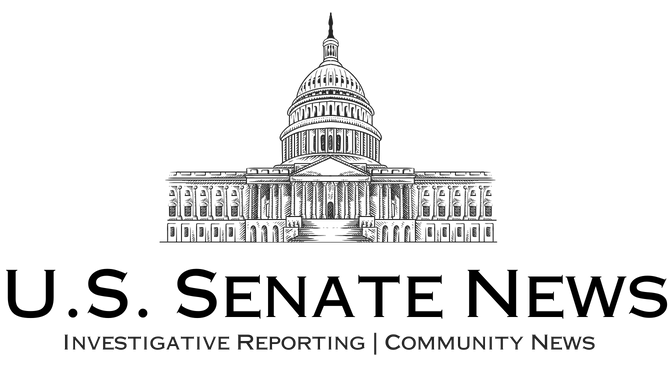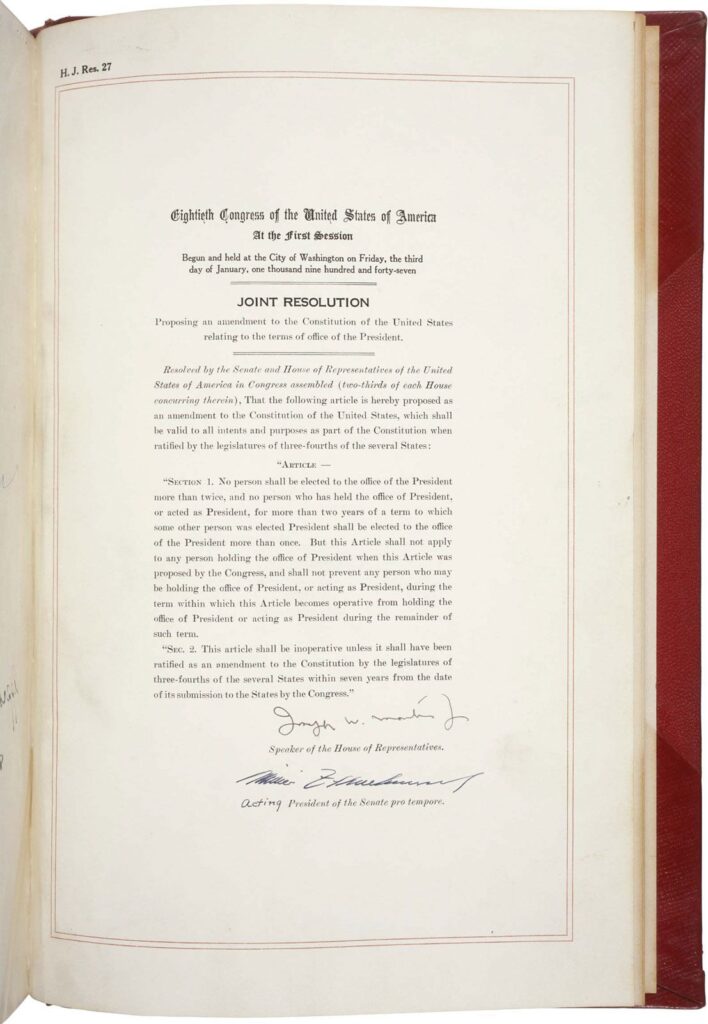22nd Amendment to the United States Constitution, an amendment to the United States Constitution (1951) that effectively limits the term of office of the President of the United States to two terms. This is one of 273 recommendations submitted by the Hoover Commission to the U.S. Congress and made by the President. Harry S. Truman reorganizes and reforms the federal government. It was formally proposed by the United States Congress on March 24, 1947, and ratified on February 27, 1951.
As Alexander Hamilton wrote in Federalist No. 69, the Constitution does not set any limits on presidential terms. And he could be requalified as many times as the people of the United States deem him worthy of trust. (Hamilton also advocated for life in the U.S. Presidency in Federalist 71.) George Washington, the country’s first president, chose to retire after two terms, leaving a respected, de facto, unofficial “Law” was established. The country’s first 31 presidents argued that after two terms in office, the terms should be rotated.
There is no clear indication that the decision to move forward with this amendment was caused by a single event or abuse of power. In fact, throughout American history, few presidents have expressed a desire to serve beyond the traditional two or more terms. Ulysses S. Grant sought a third term in 1880, but was denied the party’s nomination. Theodore Roosevelt sought a third term in 1912 but lost (this would have been his second term).
britanica quiz
American presidential election quiz
In the 1930s, however, national and global conditions caused a break in this two-period precedent.
In the midst of the Great Depression, Democrat Franklin D. Roosevelt won the 1932 election and was reelected in 1936. In 1940, Europe was embroiled in war that threatened to draw America in, and there was no clear successor to solidify the Democratic Party. President Roosevelt, a proponent of the New Deal, had previously expressed concerns about a third term, but agreed to break with Washington’s precedent. A general aversion to changing leaders during a crisis probably weighed heavily on voters’ minds—even more than the perceived deep-seated opposition to a third presidential term—and Roosevelt He tried to win again in 1943 and 1944.
Following the creation of the Hoover Commission, and after the 1946 election, when Republicans gained a majority in Congress, they introduced an amendment to limit presidential terms to two terms. This amendment limits the presidential term to 10 years. If a person assumes the office of president without an election and the term of office is less than two years, he or she may run for two full terms. Otherwise, the person who assumes the office of president may not serve more than one elected term. There have been calls for the amendment to be repealed because it does not allow voters to democratically elect a president of their choice, but over the years this has proven to be uncontroversial. . Despite this, presidents who win a second term are often referred to as “lame ducks,” and succession battles often begin before their second term is inaugurated.
The full text of the proposed amendment is as follows:
Article 1 – No person shall be elected to the office of President more than twice. Further, no person shall hold the office of President or hold the office of President for more than two years during the period during which another person was elected President. shall be elected to the office of President more than once. provided, however, that this section shall not apply to any person holding the office of President at the time this section is proposed by Congress, and shall not apply to any person holding the office of President or acting on behalf of the President during the period this section applies. It does not prevent this. He will be unable to hold the office of president or act on his behalf for the remainder of his term.
Article 2 – This article shall not operate unless ratified as an amendment to the Constitution by the legislatures of three-fourths of the several states within seven years from the date of its submission to the states by Congress.



